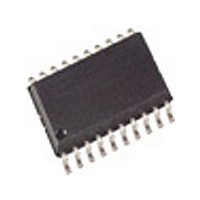T5743N-TG Atmel, T5743N-TG Datasheet - Page 4

T5743N-TG
Manufacturer Part Number
T5743N-TG
Description
Manufacturer
Atmel
Datasheet
1.T5743N-TG.pdf
(34 pages)
Specifications of T5743N-TG
Operating Frequency (max)
450000kHz
Operating Temperature (min)
-40C
Operating Temperature (max)
105C
Operating Temperature Classification
Industrial
Operating Supply Voltage (min)
4.5V
Operating Supply Voltage (typ)
5V
Operating Supply Voltage (max)
5.5V
Lead Free Status / Rohs Status
Not Compliant
The passive loop filter connected to Pin LF is designed for
a loop bandwidth of BLoop = 100 kHz. This value for
BLoop exhibits the best possible noise performance of the
LO. Figure 4 shows the appropriate loop filter compo-
nents to achieve the desired loop bandwidth. If the filter
components are changed for any reason please notify that
the maximum capacitive load at Pin LF is limited. If the
capacitive load is exceeded, a bit check may no longer be
possible since f
check starts to evaluate the incoming data stream. Self
polling does therefore also not work in that case.
f
IF frequency f
To determine f
considered at this point. The nominal IF frequency is
f
corner frequencies, the filter is tuned by the crystal
frequency f
between f
logic level at Pin MODE.
Table 1 Calculation of LO and IF frequency
T5743N
f
f
300 MHz < f
365 MHz < f
4 (34)
LO
IF
RF
RF
= 1 MHz. To achieve a good accuracy of the filter’s
is determined by the RF input frequency f
= 315 MHz, MODE = 0
= 433.92 MHz, MODE = 1
f
LO
IF
LFGND
LFVCC
= f
DVCC
XTO
XTO
and f
LF
RF
RF
RF
IF
LO
. This means that there is a fixed relation
LO
Figure 4. PLL peripherals
using the following formula:
Conditions
< 365 MHz, MODE = 0
< 450 MHz, MODE = 1
– f
, the construction of the IF filter must be
LO
IF
V
cannot settle in time before the bit
V
. This relation is dependent on the
S
S
C9
R1
C10
C
L
R1 = 820
C9 = 4.7 nF
C10 = 1 nF
RF
f
f
f
f
LO
LO
LO
LO
Local Oscillator Frequency
and the
+
+
= 314 MHz
= 432.92 MHz
1 )
1 )
f
RF
f
RF
314
432.92
1
This is described by the following formulas:
The relation is designed to achieve the nominal IF
frequency of f
applications where f
‘0’. In the case of f
to ‘1’. For other RF frequencies, f
f
on f
The RF input either from an antenna or from a generator
must be transformed to the RF input Pin LNA_IN. The
input impedance of that pin is provided in the electrical
parameters. The parasitic board inductances and capaci-
tances also influence the input matching. The RF receiver
T5743N exhibits its highest sensitivity at the best signal-
to-noise ratio in the LNA. Hence, noise matching is the
best choice for designing the transformation network.
A good practice when designing the network is to start
with power matching. From that starting point, the values
of the components can be varied to some extent to achieve
the best sensitivity.
If a SAW is implemented into the input network a mirror
frequency suppression of DP
There are SAWs available that exhibit a notch at
Df = 2 MHz. These SAWs work best for an intermediate
frequency of f
is also improved by using a SAW. In typical automotive
applications, a SAW is used.
Figure 5 shows a typical input matching network, for
f
Figure 6 illustrates an according input matching to 50 W
without a SAW. The input matching networks shown in
figure 6 are the reference networks for the parameters
given in the electrical characteristics.
1
IF
RF
MODE + 0 (USA) : f
MODE + 1 (Europe) : f
is then dependent on the logical level at Pin MODE and
RF
= 315 MHz and f
. Table 1 summarizes the different conditions.
IF
IF
= 1 MHz. The selectivity of the receiver
= 1 MHz for most applications. For
RF
RF
= 433.92 MHz, MODE must be set
f
f
RF
f
f
IF
IF
= 315 MHz, MODE must be set to
IF
IF
= 1 MHz
= 1 MHz
+
+
= 433.92 MHz using a SAW.
Intermediate Frequency
IF
+
314
432.92
IF
Ref
f
LO
+
f
314
LO
f
= 40 dB can be achieved.
LO
IF
432.92
is not equal to 1 MHz.
f
Rev. A3, 17-Dec-01
LO














